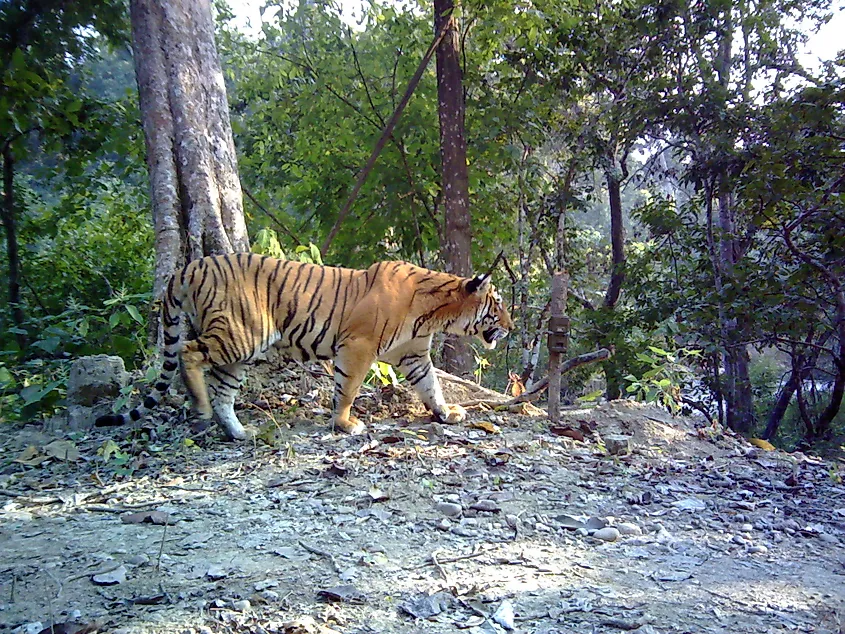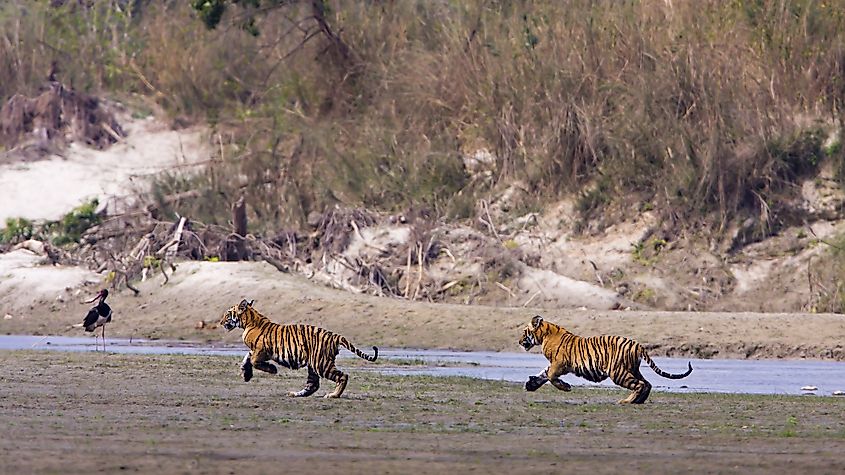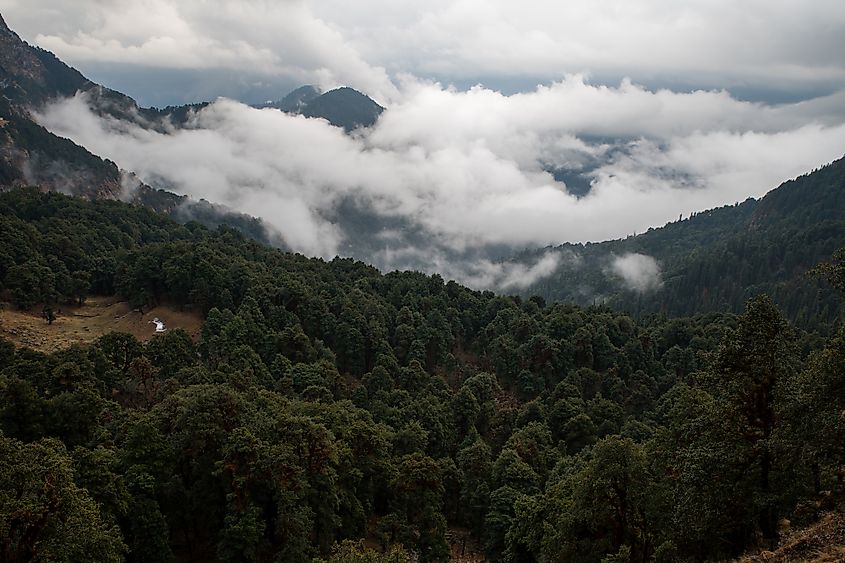Nepal’s Highest Tiger Sighting Is A Reminder To Save The Big Cat's Himalayan Home

Recently, a camera trap has captured a Royal Bengal Tiger at an elevation of 2,497 meters in the densely forested mountains of Dadeldhura in far-western Nepal. It is the country's highest-ever recorded tiger sighting. Although Bengal tigers have been reported at higher elevations in India (3,602 meters) and Bhutan (4,038 meters), Nepal's national record reminds us of the value of the high-altitude forested Himalayan mountains as a habitat for these endangered big cats. To understand the significance of this sighting and its role in shaping future tiger conservation strategies, World Atlas spoke to Dr. Ghana S. Gurung, country representative of World Wildlife Fund-Nepal (WWF-N).
A Boost To Tiger Conservation In Nepal

"Tigers are highly adaptive species with their range spanning from sea levels to mountainous regions, so it isn’t surprising that they’ve been recorded at 2,497metres. The significance is huge for a small country like Nepal. With this finding, the tiger range in Nepal extends to the Mahabharata range, and beyond the boundaries of Terai Arc Landscape (TAL) - the only landscape in Nepal with known tiger distribution to date. This finding will, therefore, form the basis for shaping the conservation of tigers in Nepal beyond the Terai Arc Landscape" - WWF-N.
Taking the cue from local reports of tiger sightings in the forests of Mahabharat Range in Dadeldhura, the Divisional Forestry Office set up 32 camera traps in the region to capture evidence of the presence of tigers. World Wildlife Fund (WWF) provided the financial and technical assistance needed for this month-long campaign. In addition to the tiger, the installed camera traps in Dadeldhura also caught images of several other species including those that are suitable prey for tigers. Various species of deer, pheasants, porcupines, civets, red foxes, and even leopards were recorded - all this in a habitat that is not even within the limits of a protected area.
“This is a great achievement, and shows that the nature corridors offer connectivity for wildlife. It also proves that with a growing tiger population in the Tarai national parks, the animals are dispersing and moving up the mountains,” said Dr. Gurung.
Shows The Way To The Future

As per WWF-N, the tiger sighting at 2,497m meters opens up new avenues, specifically in understanding whether these high-altitude temperate forests are only used temporarily by the tigers or are a permanent home for the predators.
"These habitats have not been explored previously and therefore the presence and likelihood of tigers inhabiting these regions since historical times cannot be overruled. Additionally, these forests are well connected to Jogbuda and Brahmadev forests within the Terai Arc Landscape, Nepal and with Boom, Danda and Champawat forest ranges in India. The study also confirms good prey base with relatively less anthropogenic disturbances in the region," reported WWF-N.
Another intriguing fact, as mentioned by WWF-N, is that the tales of the alleged man-eating Champawat tigress of the early 20th century could also serve as an indication that these high-altitude habitats have supported tiger populations historically. Champawat forest range that was a favorite haunt of this legendary tigress (that was killed down by Jim Corbett) is right across the Nepal-India border in India and contiguous to the forest patch where Nepal recorded the tiger at 2,497 meters.
Thus, it becomes clear that in-depth studies to learn more about this high-altitude address of Bengal tigers are the need of the day. WWF-N enlists some steps to be taken in this direction:
- Protection of tigers, prey and habitat through community stewardship (some level of prey poaching already exists- in communication with citizen scientists)
- Managing human-wildlife conflict (is already a problem there)
- Supporting the government to intensify monitoring in other unexplored regions of the Mahabharata range- will also contribute towards our TX2 goal.
- Support Nepal Government’s initiative in bringing diverse stakeholders (District Forest Office, community forests, the local and provincial governments, national and international organizations) on board and investing on-ground actions to save and protect this endangered global icon and their last remaining habitats.
A Reminder To Conserve South Asia's Potential New Home For Tigers

In 2019, a study led by the Global Tiger Forum (GTF) stressed on the importance of protecting the potential high-altitude habitats of tigers. It described "habitat suitability" of tigers in the Western and Eastern Himalayan regions spread across the three countries of India, Nepal, and Bhutan. The total tiger populations in these countries are 2,967, 235, and 103, respectively, as per their most recent estimates.
The study mentioned several factors that encourage the presence of tigers in the Western and Eastern Himalayan regions. However, such habitats have not been extensively surveyed for tiger presence, prey and habitat status although they hold great ecological value, and tiger protection plans can boost the overall conservation of such precious habitats. The study also emphasized that in-depth investigations of tiger adaptation and movement in high-altitude areas are essential to creating a future conservation roadmap.
So, how does the high-altitude tiger sighting in Nepal further aid the progress of such studies?
According to WWF-N: "Nepal's finding has further validated the study commenced by GTF which revealed that high altitude regions in Nepal, India, and Bhutan could become stable tiger habitats with 2213 Sq. km of potential high-altitude tiger habitat in Nepal. The camera trap sighting of the tiger thus provides solid evidence for furthering the cause of tiger conservation in the Mahabharata Range and other high-altitude regions of Nepal. Further, WWF Nepal’s study on the impacts of climate change on biodiversity in TAL undertaken by Thapa et al., 2016 identified these forests (northern flanks of TAL) as potential climate refugia. Protecting these climate refugia are therefore vital to securing future habitats in changing climatic scenario."











